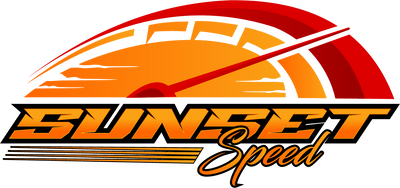Why Is It More Expensive in Australia Than in the USA?
By Brett McMillan — Updated for 2025
We get this question all the time — and fair enough. Building or modifying a high-performance car in Australia isn’t cheap. Before comparing local pricing to what you see in the U.S., it helps to understand what actually drives the difference.
At Sunset Speed, we’ve imported and supplied Modern Mopar performance parts for years and now run a full-service performance workshop in Port Kennedy. Below is a clear breakdown of the real costs — and how we work to keep your landed price sharp.
Exchange Rates & Import Duties (The Foundation)
Most performance parts we sell — from Jeep Trackhawk upgrades to Chrysler SRT components — originate in the United States, so the AUD–USD exchange rate directly affects your price. It can move 10–20% in a short period.
The Australia–United States Free Trade Agreement (AUSFTA) lets items under $1,000 AUD (including freight) enter duty-free. For a business order — typically well over that threshold — we must factor in:
- 5% import duty (typical for many categories)
- 10% GST on goods + shipping
- Customs processing & brokerage/clearance fees
- Handling and terminal charges
Those costs accrue before the part even touches Australian soil.
Freight: Why It Can Be the Biggest Line Item
Covid-era freight volatility changed the industry. Sea containers climbed from roughly $6–8k to north of $18k, air freight tripled at times, and carriers introduced an Emergency Situation Surcharge (ESS). While the market has stabilised, volumetric weight can still dwarf physical weight on big, light items.
L × W × H (cm) ÷ 5000 = Volumetric kg (chargeable if higher than physical)
Example — Black Ops Carbon Fibre hood:
| Package | Dimensions | Physical Weight | Volumetric Calc | Chargeable |
|---|---|---|---|---|
| Carbon hood box | 180 × 180 × 20 cm | ≈ 30 kg | 180 × 180 × 20 ÷ 5000 = 129.6 kg | 129.6 kg (rounded) |
That single shipment once cost a little over $4,000 in freight alone. After hard work and better volume terms with DHL, we shaved it to a little over $2,000 for the same box — a massive improvement that we pass on wherever possible.
2025: Better Than Peak Covid — But Australia Is Still Different
Pricing is more stable now, but our market remains smaller and further from origin. That means longer lanes, more handling, and less scale than the U.S. — structural factors we can’t erase entirely. What we can do is control our end:
- Negotiated DHL tiers for bulky and mixed consignments
- Smarter consolidation to reduce per-item freight
- Transparent landed pricing and ETA expectations
- In-house fitment at our Port Kennedy workshop for a turnkey result
When you buy through Sunset Speed, you’re not just paying for a box of parts — you’re paying for correct fitment, warranty support, and a workshop that stands behind what it sells.
Why U.S. Websites Look Cheaper
- U.S. online prices don’t include international freight or Australian taxes
- Domestic U.S. shipping is short-haul and inexpensive
- Huge buyer base and warehousing density lowers their unit cost
Once you add international freight, duty, GST, and clearance, you’ll find our pricing highly competitive — especially on large or mixed shipments where our DHL structure shines.
Need a landed price or turnkey fitment?
We’ll quote parts, freight, duties, GST — and book you in for installation if you want a full package.
Quick FAQs
Why are car parts more expensive in Australia?
Currency exchange, freight (often charged by volumetric weight), import duty, GST, and clearance costs. It’s the distance and logistics.
Do you import directly from the U.S.?
Yes. We work closely with U.S. suppliers and DHL to secure reliable ETAs and better landed costs.
Can you fit what you sell?
Absolutely. Our Port Kennedy workshop handles parts-only orders, installs, and full performance packages.



